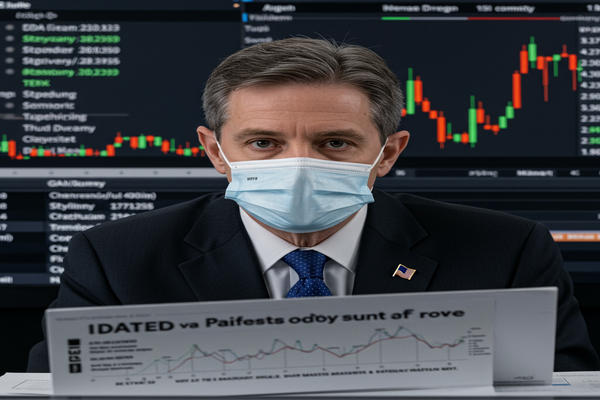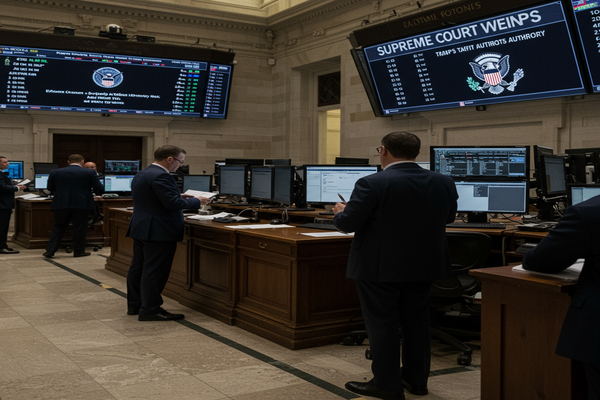
Election results and fresh payroll data have refocused markets on price levels and labor resilience. Voters signaled a desire for cheaper everyday goods, a short term political shock that could weigh on risk appetite today. In the near term, a modest ADP rebound of 42,000 private jobs will test rate cut hopes. Over the long term, sustained higher price levels and rising household debt shape policy paths in the US and overseas.
Market backdrop: why the election message matters now
Yesterday’s decisive Democratic wins sent a clear message to economic policymakers. Voters are reacting to higher prices for commonly bought items. That matters now because markets price policy expectations quickly. Traders will reassess the odds that politicians and central bankers respond with stronger measures to ease cost pressures.
The headline inflation rate has eased from its 2022 peak to roughly 3 percent year over year. However prices for staples have climbed for years and continue to surprise consumers. Grocery prices are up 29.2 percent since February 2020. Household energy costs have risen about 40 percent over the same span. Frequent purchases are proving particularly sensitive. Coffee costs rose 20 percent year over year and ground beef 15 percent.
Globally, this dynamic matters for markets in Europe and Asia because US inflation expectations influence global bond yields and monetary policy signaling. Emerging markets can feel amplified effects through trade, commodity prices and capital flows. Locally US equity sectors tied to consumer spending will watch sentiment closely today.
ADP payrolls and the missing government jobs read
With the government jobs report delayed by the shutdown, the private payroll reading from NASDAQ:ADP carries extra weight. ADP reported 42,000 private-sector jobs added in October. That reverses losses from the prior month but represents a muted rebound. It is the first positive monthly reading since July in ADP’s series.
Market participants will treat the print in two ways. On one hand a return to positive payroll gains argues that the labor market is not collapsing. On the other hand the magnitude of the gain is limited and uneven. ADP noted that additions were concentrated in education and health care, trade transportation and utilities, and financial activities. Leisure and hospitality and professional and business services shed jobs.
For the Fed, the data complicate the calculus. Policymakers who planned for a December decision will weigh a tepid private jobs gain against other indicators. A small positive read can be used to justify holding policy steady. Meanwhile those emphasizing slower hiring will point to the lack of breadth in payroll growth.
Policy and legal risk: tariffs at the Supreme Court and household debt trends
Legal developments could also shape market expectations for trade costs. The Supreme Court is hearing oral arguments over the legality of the president’s use of emergency authority to impose tariffs. If the court curtails emergency tariff powers, that could reduce the risk of sudden trade costs. If the court upholds broad authority, markets will price the potential for policy-driven price changes.
At the same time household balance sheets show stress. The New York Fed reported household debt rose by $197 billion in the third quarter. Most delinquency rates remained stable but student loan missed payments are starting to appear on credit reports. Rising debt and early signs of payment strain create a longer term drag on consumer resilience. That is relevant for sectors that depend on discretionary spending and for bank credit risk considerations.
Sector implications and trading focus for the session
Expect stocks and bonds to parse the inflation narrative in different ways. Consumer staples and grocery retailers may draw buying interest if investors anticipate political pressure for price relief. Energy names could respond to evolving views on demand and consumer fuel costs. Financial stocks will watch household debt trends and any signals on rate policy.
The ADP read and the missing Bureau of Labor Statistics release increase the odds of intraday volatility. Rates markets will react to any reweighing of rate cut odds for December. Equity traders will watch leadership in small caps versus large caps. International markets will take cues from US yield moves, which feed back into currency cross rates and emerging market sentiment.
News flow to watch through the session includes further ADP commentary, Fed speakers or minutes that may be released, any updates on the government shutdown that affect data releases, and the Supreme Court’s handling of the tariff case. Market participants will also parse consumer price anecdotes. Items such as coffee and ground beef that have seen sharp price jumps are powerful for retail sentiment even when headline inflation moderates.
What investors will track and how to read the signals
Today’s session will be about reading nuance. Small employment gains point to resilience. Persistent price-level increases and high-profile consumer pain points create political pressure. That combination means that markets will respond more to flow and narrative than to a single number.
Watch momentum in rate-sensitive instruments. If yields fall on the ADP print, the market will be signaling that traders expect easing down the line. If yields rise, the message will be that price pressures and stronger labor signals keep tightening on the table. Equities will likely follow sector cues tied to consumer spending and financial conditions.
Finally note the corporate sponsorship message from NYSE:BP in the background of today’s headlines. Energy companies that emphasize retail fuel and network investments may highlight the role of domestic infrastructure in easing consumer cost frictions over time.
In sum the session opens with politics and data competing to set the narrative. Short term market reaction will pivot on interpretation of the 42,000 private payroll gain and on how traders weigh the election’s price message. Over the longer term, persistent price-level increases and rising household debt will remain key themes for policy and capital allocation decisions around the globe.








